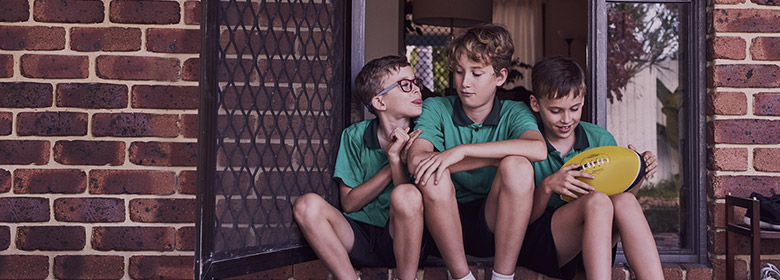- Featured
- Money & Relationships
- Kids & Money
Finances and houses have at least one thing in common – They need a good foundation!
Here are some tips about how to help teach your children about the value of money and grow with good financial knowledge:
1. Explain the concept of money.
Showing them cash notes, coins and debit/credit cards in the process. This will teach your children that money provides a common base to value and exchange goods and services and it can also be used as a store of value (to save and use for later).
2. Establish a daily/weekly age-appropriate chore routine that is linked to pocket money.
A mixture of low-value cash notes and coins. This will teach your children about the source and destination of cashflow (the way money moves), with emphasis on the fact that ‘money doesn’t grow on trees’; rather it needs to be earnt.
3. Explain the difference between needs and wants.
Ask them to write a list of things they need and want. This will teach your children that there is a difference between needs/necessities and wants/luxuries, whilst also helping them to identify their own (and subsequently better inform their upcoming purchasing decisions).
4. Take them shopping.
Ask them to write down the cost of the things they need and want (preferably from at least two different retailers). This will teach your children several things:
-Reinforce that money provides a common base to value and exchange goods and services.
-The importance of comparing the price of things between different retailers.
5. Provide them with three piggy banks/jars.
5. After their first pocket money is received, provide them with three piggy banks/jars, labelled ‘Needs’, ‘Wants’, and ‘Savings’, and ask them to deposit the following percentage amounts into each, 50%, 30%, and 20% respectively. This will teach your children the importance of budgeting and managing their money in a responsible and disciplined way.
6. Teach them about limits and prioritising their purchases.
6. Ask them to decide the needs and wants from their list that they would like, and can afford, to purchase now. Importantly, don’t allow them to bolster their purchasing power with the ‘Savings’ piggy bank/jar just yet. This will teach your children about money limits and prioritising their purchases – namely, they can’t have everything now, a certain level of compromise has to occur.
7. Take them shopping with their pocket money.
7. Take them shopping and assist them with purchasing the above things that they have decided upon with their pocket money. This will teach your children about being aware of money leaving their possession. A cash-based payment is tangible – the cash notes and coins that they hold in their hand has a value attached to it. This awareness is often lost when using ‘tap and pay’.
8. Sharing is caring.
8. Ask them to donate a small portion from their ‘Wants’ piggy bank/jar to a charity of their choosing. This will teach your children about taking the time to reflect on not only their lives but also the lives of those less fortunate. In a nutshell, being thankful for what they have and helping those in need where they can – even a small gesture can make a big difference in someone’s life.
9. Teach them about goal setting.
9. Ask them to review their list of remaining needs and wants, and help them to work out how long it will take them to save for these things given their incoming cashflow and 50/30/20 budgeting split. Importantly, you can now take into account the ‘Savings’ piggy bank/jar, but a portion should remain at all times. This will teach your children about the benefits of goal setting (and savings plans) and delayed gratification, as well as keeping an emergency buffer at hand.
Also in kids and money.
What should you teach your kids about money?
- Featured
- Kids & Money
* This article has been sourced from IRESS Ltd., Financial Knowledge Centre.
This information has been provided without taking into account any of your objectives, financial situation or needs. You should consider whether it is suitable for your circumstances before acquiring this product.
All loans are provided by Beyond Bank Australia Ltd ABN 15 087 651 143 AFSL/Australian Credit Licence 237856. © 2023.
